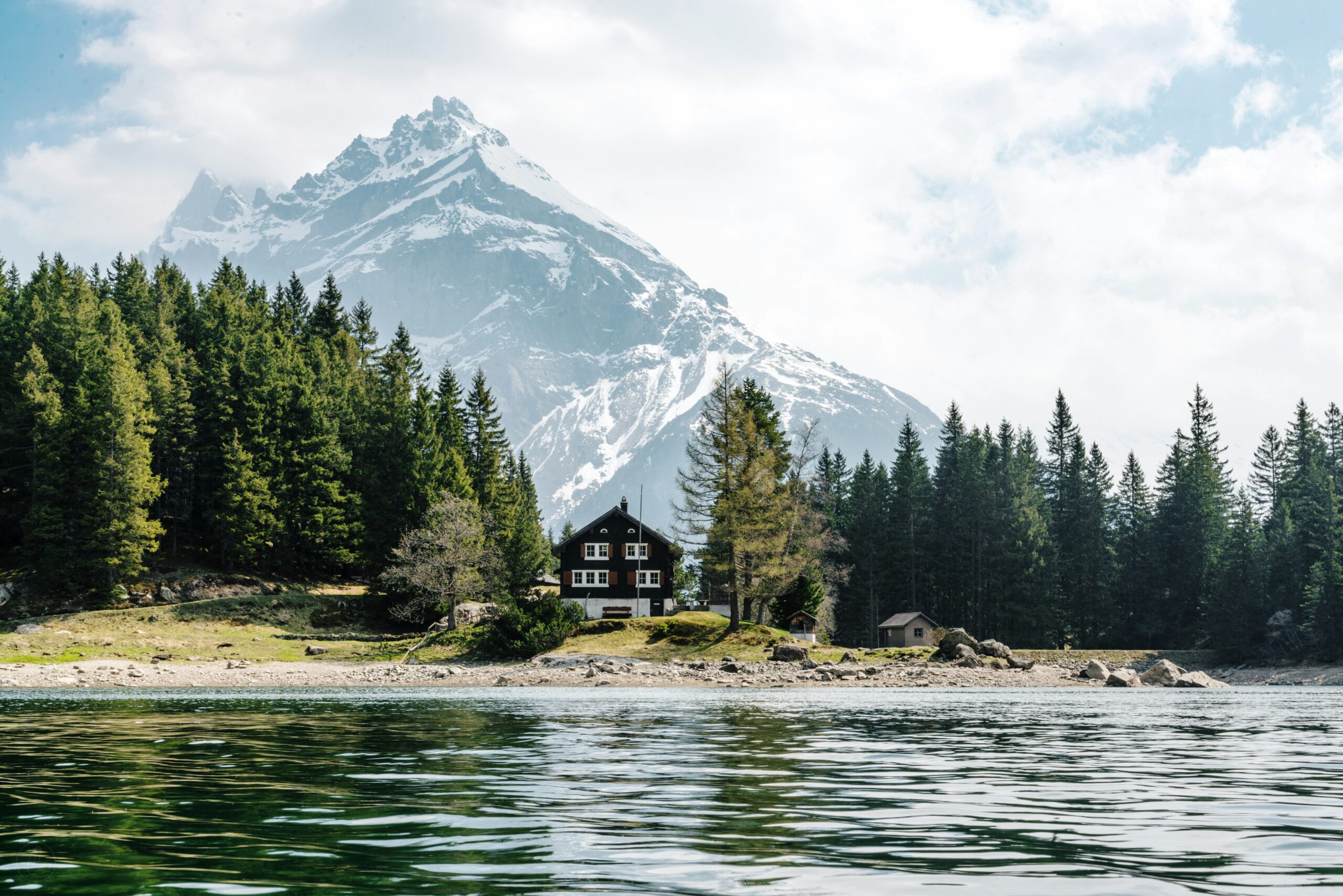Introduction
In our interconnected world, understanding the unique attributes and characteristics of different countries can provide valuable insights, whether for travel, business, or educational purposes. This blog post aims to offer a comprehensive comparison between Hungary and Switzerland, two European nations with rich histories and diverse offerings. Through a detailed analysis across multiple dimensions, we will explore the geographical features, cultural landscapes, economic structures, tourism appeal, culinary traditions, educational systems, and lifestyle choices that define these two countries.
Geographically, Hungary and Switzerland present stark contrasts, from Hungary’s vast plains to Switzerland’s majestic Alps. The cultural fabric of both nations is equally intriguing, shaped by their historical paths and societal values. Economically, while Switzerland stands as a global financial hub, Hungary’s economy has its own unique strengths and areas of growth. Each country offers distinct tourism experiences, from Hungary’s thermal baths and historical architecture to Switzerland’s picturesque landscapes and outdoor adventures.
Cuisine is another area where Hungary and Switzerland shine in their own right. Hungarian gastronomy is renowned for its hearty dishes and rich flavors, while Swiss cuisine offers a fusion of influences with a strong emphasis on dairy and chocolate. Education systems and lifestyle choices also differ, influenced by historical, social, and economic factors that have shaped each nation over time.
By comparing these various aspects, this blog post will paint a detailed portrait of Hungary and Switzerland, providing readers with a nuanced understanding of what makes each country unique. Whether you are planning a visit, considering relocation, or simply curious about these nations, this analysis will equip you with valuable knowledge and insights.
Geography and Climate
Hungary and Switzerland offer stark contrasts in terms of geography and climate, each presenting a unique environmental backdrop. Hungary, situated in Central Europe, is predominantly characterized by its flat terrain. The Great Hungarian Plain, or Alföld, dominates the eastern part of the country, stretching across vast expanses of land that are ideal for agriculture. The presence of the Danube River, which flows through the capital city of Budapest, adds to Hungary’s geographical significance, providing both a historical trade route and a current-day natural attraction.
Contrastingly, Switzerland is renowned for its mountainous landscape, dominated by the Alps, which cover approximately 60% of the country. The Swiss Alps not only define the country’s topography but also significantly influence its climate and biodiversity. The Jura Mountains and the Swiss Plateau add to the varied terrain, making Switzerland a haven for outdoor enthusiasts and nature lovers. The alpine regions offer picturesque landscapes, attracting tourists worldwide for skiing, hiking, and mountaineering.
When it comes to climate, Hungary experiences a continental climate, marked by hot summers and cold winters. The country is subject to significant temperature variations, with July temperatures often reaching up to 35°C (95°F) and January temperatures dropping as low as -10°C (14°F). The climate supports diverse agricultural activities, including the cultivation of crops like wheat, corn, and sunflowers.
In Switzerland, the climate is notably more varied, influenced by the diverse topography. The lowland areas, such as the Swiss Plateau, experience a temperate climate with moderate temperatures and regular precipitation. In contrast, the higher altitudes of the Alps experience alpine climate conditions, characterized by cold, snowy winters and cool summers. This variability supports a wide range of flora and fauna, contributing to Switzerland’s rich biodiversity.
Overall, while Hungary’s flat plains and continental climate provide a stark contrast to Switzerland’s mountainous regions and varied climate zones, both countries offer unique geographical features that shape their environmental and cultural landscapes.
Cultural Heritage and Traditions
Both Hungary and Switzerland boast rich cultural heritages and diverse traditions that reflect their unique historical trajectories. Hungary is renowned for its vibrant folk music and dance, which have been integral to Hungarian culture for centuries. The melodies of Hungarian folk music often feature complex rhythms and distinctive scales, while traditional dances like the Csárdás showcase energetic movements and colorful costumes. Hungary’s unique language, Magyar, further sets it apart, being one of the few non-Indo-European languages in Europe, contributing to a distinct cultural identity.
In contrast, Switzerland’s cultural landscape is characterized by its diversity, stemming from its multilingual population. The country is divided into German, French, and Italian-speaking regions, each bringing its own cultural influences. This amalgamation results in a rich tapestry of traditions and customs. Swiss folk music, for instance, incorporates elements from the various linguistic regions, creating a unique blend of sounds. Traditional Swiss dances, such as the Ländler, reflect the pastoral life of the Alpine regions.
National holidays and festivals also play a significant role in the cultural identities of both nations. In Hungary, national holidays like St. Stephen’s Day on August 20th celebrate the nation’s history and heritage, while festivals such as the Busójárás in Mohács mark the end of winter with elaborate masks and folk performances. Switzerland, on the other hand, celebrates its National Day on August 1st with fireworks and parades across the country. The Fête de l’Escalade in Geneva commemorates a historic victory with costumed reenactments and traditional foods.
Traditional customs further define the cultural fabric of these countries. Hungarian customs, such as the making of intricate Easter eggs and the practice of folk embroidery, are deeply rooted in community life. In Switzerland, customs like the annual cow parades, where cattle are adorned with flowers and bells, reflect the nation’s agricultural heritage. These traditions, whether in Hungary or Switzerland, are cherished and preserved, offering a window into the historical and cultural essence of each nation.
Economic Landscape
Hungary and Switzerland present a fascinating study in contrasts when it comes to their economic landscapes. Hungary, as an emerging market within the European Union, has shown significant growth in recent years. The country’s GDP has been steadily increasing, driven by sectors such as manufacturing, agriculture, and services. Hungary boasts a relatively high employment rate, although it fluctuates with economic cycles and regional disparities. The country’s industrial base, particularly in automotive and electronics manufacturing, plays a crucial role in its economic structure.
In contrast, Switzerland is renowned for its well-established financial sector, characterized by a robust banking industry and a high standard of living. The Swiss economy is marked by stability and low unemployment rates, often attributed to its diversified industrial base and strong services sector. Key industries in Switzerland include finance, pharmaceuticals, machinery, and tourism. The country’s GDP per capita is one of the highest in the world, reflecting its affluence and economic resilience.
Economic policies in both countries have a significant impact on their respective economic landscapes. Hungary’s economic policy focuses on attracting foreign direct investment (FDI) and enhancing competitiveness through tax incentives and infrastructural development. Meanwhile, Switzerland’s economic policies emphasize maintaining a stable economic environment, fostering innovation, and upholding its position as a global financial hub.
International trade plays a vital role in both economies. Hungary benefits from its EU membership, enabling access to a broader market and fostering trade partnerships. The country exports a substantial portion of its goods to other EU countries, which bolsters its economic performance. Switzerland, while not an EU member, maintains strong trade relations worldwide, leveraging free trade agreements and its reputation for high-quality products and services to sustain its economic dynamism.
Overall, the economic landscapes of Hungary and Switzerland are shaped by their unique histories, policies, and positions within the global economy. While Hungary continues to develop its market economy within the EU framework, Switzerland remains a beacon of financial stability and high living standards.
Tourism and Travel
Hungary and Switzerland offer diverse and unique attractions for tourists, each providing a distinct travel experience. Hungary’s tourism sector is heavily centered around its capital, Budapest, renowned for its historic sites, thermal baths, and vibrant cultural scene. Noteworthy landmarks include the Buda Castle, Parliament Building, and the historic thermal baths like Széchenyi and Gellért. These thermal baths are not only a draw for relaxation but also for their architectural splendor and historical significance.
On the other hand, Switzerland is celebrated for its natural landscapes, particularly its ski resorts and pristine lakes. The Swiss Alps attract millions of visitors annually, with premier resorts such as Zermatt, St. Moritz, and Davos offering world-class skiing and snowboarding opportunities. Additionally, the picturesque lakes like Lake Geneva and Lake Lucerne provide idyllic settings for boating, swimming, and hiking, contributing to Switzerland’s reputation as a haven for outdoor enthusiasts.
Cities like Zurich and Geneva add another layer to Switzerland’s appeal with their blend of modernity and tradition. Zurich, known for its financial district, also offers a rich cultural experience with numerous museums, art galleries, and a vibrant nightlife. Geneva, often recognized as a hub for international diplomacy, boasts the Jet d’Eau, the United Nations headquarters, and numerous cultural festivals.
In terms of travel infrastructure, both countries are well-equipped to handle large volumes of tourists. Hungary’s public transportation, particularly in Budapest, is efficient and tourist-friendly, with an extensive network of buses, trams, and metros. Switzerland, famous for its punctual and scenic train services, provides seamless connectivity across its cities and tourist spots, enhancing the travel experience.
Tourist demographics in Hungary typically include a mix of European travelers and visitors from Asia and the Americas, drawn by the affordability and rich historical offerings. Switzerland, with its luxury resorts and high-end services, attracts a more affluent demographic, including a significant number of tourists from Europe, North America, and the Middle East.
Cuisine and Culinary Traditions
Hungary and Switzerland, both rich in culinary heritage, offer a diverse range of gastronomic delights that are deeply rooted in their cultural histories. Hungarian cuisine is renowned for its robust flavors and hearty dishes, with goulash being a quintessential example. This famous dish, a meat and vegetable stew seasoned with paprika, reflects the Hungarian preference for bold spices and hearty ingredients. Paprika, in fact, is a staple in many Hungarian dishes, contributing to the distinct flavor profile that characterizes the nation’s cuisine.
In contrast, Swiss cuisine is celebrated for its simplicity and high-quality ingredients, with cheese and chocolate standing out as iconic elements. The Swiss are particularly known for their mastery of cheese, with fondue and raclette being two traditional dishes that showcase this expertise. Fondue, a communal dish of melted cheese served with bread, and raclette, where cheese is melted and scraped over potatoes or bread, are not just meals but social experiences that embody Swiss hospitality and conviviality.
Typical ingredients in Hungarian cooking include meats such as pork and beef, vegetables like potatoes and cabbage, and a variety of spices, with paprika being the most prominent. Cooking methods often involve slow-cooking and stewing, which allow flavors to develop fully. Popular Hungarian dishes include pörkölt, a type of meat stew, and lángos, a deep-fried dough often topped with sour cream and cheese.
Swiss cuisine, on the other hand, emphasizes dairy products, particularly cheese and milk, as well as chocolate, which is regarded as some of the finest in the world. Swiss cooking methods are generally simpler, focusing on preserving the natural flavors of the ingredients. Rösti, a potato dish, and Zürcher Geschnetzeltes, sliced veal with cream sauce, are other popular dishes that highlight the straightforward yet flavorful nature of Swiss cuisine.
In essence, while Hungarian cuisine is characterized by its rich, spicy, and hearty nature, Swiss cuisine is noted for its elegant simplicity and focus on high-quality ingredients. Both culinary traditions offer unique and delightful experiences that reflect the diverse cultural landscapes of Hungary and Switzerland.
Education Systems
The education systems of Hungary and Switzerland exhibit distinct characteristics and structures, reflecting their unique cultural and societal values. In Hungary, the education system is divided into primary, secondary, and higher education. Primary education starts at age six and lasts eight years, followed by four years of secondary education. Hungary’s higher education system includes universities and colleges, offering a wide range of undergraduate, graduate, and doctoral programs. The quality of education in Hungary has seen improvements over the years, with several universities gaining international recognition.
In contrast, Switzerland’s education system is highly decentralized, with cantonal authorities playing a significant role in educational governance. Swiss education begins with primary school, followed by lower secondary education and upper secondary education, which includes both academic and vocational tracks. Switzerland is renowned for its dual education system, combining classroom instruction with practical training in various industries. This approach ensures that students are well-prepared for the labor market.
The language of instruction in Hungary is primarily Hungarian, although there are programs available in English and German at the higher education level to cater to international students. Conversely, Switzerland’s multilingual landscape includes German, French, Italian, and Romansh as official languages, and educational institutions offer programs in these languages. This multilingualism attracts a diverse international student body, contributing to the country’s global academic appeal.
Notable universities in Hungary include Eötvös Loránd University and the University of Szeged, both of which are known for their research output and academic excellence. Switzerland boasts world-renowned institutions such as ETH Zurich and the University of Geneva, which consistently rank high in global university rankings.
Overall, while both Hungary and Switzerland provide robust education systems, their approaches differ significantly. Hungary emphasizes a centralized, traditional academic pathway, whereas Switzerland’s decentralized, multilingual, and practical approach offers a unique blend of academic and vocational training, making it a preferred destination for international students.
Lifestyle and Quality of Life
When evaluating the lifestyle and quality of life in Hungary and Switzerland, several key factors come into play, including cost of living, healthcare, work-life balance, and social services. Understanding these aspects will provide insight into the daily experiences and overall well-being of residents in each country.
Switzerland is renowned for its high standard of living, albeit at a significant cost. The cost of living in Switzerland is among the highest in the world, with expenses for housing, food, and transportation considerably elevated. In contrast, Hungary offers a more affordable lifestyle, with lower costs for housing, utilities, and daily necessities. This makes Hungary an attractive option for those looking to maintain a comfortable life without the financial strain seen in Switzerland.
Healthcare systems in both countries are robust, yet different in their approach. Switzerland boasts one of the best healthcare systems globally, characterized by high-quality medical services and advanced healthcare infrastructure. However, this comes with high insurance premiums and out-of-pocket costs. Hungary, while not on the same level as Switzerland in terms of healthcare quality, provides accessible and affordable medical care through a public healthcare system, supplemented by private options for those seeking expedited services.
Work-life balance is another crucial aspect to consider. Swiss residents generally enjoy a favorable work-life balance, supported by labor laws that emphasize reasonable working hours, ample vacation time, and family-friendly policies. In Hungary, the work-life balance is gradually improving, with increasing recognition of the importance of leisure and family time. However, the progress is slower compared to Switzerland, where the cultural emphasis on personal well-being and leisure is more deeply ingrained.
Social services and support systems also differ notably. Switzerland offers extensive social services, including unemployment benefits, social security, and comprehensive pension schemes, contributing to a strong safety net for its residents. Hungary provides essential social services, but these are not as extensive or well-funded as those in Switzerland, which can affect the overall sense of security among its citizens.
Cultural attitudes towards life and leisure further distinguish the two countries. Swiss culture places a high value on efficiency, precision, and a balanced lifestyle, with ample opportunities for outdoor activities and cultural events. Hungarian culture, while also rich in traditions and leisure activities, tends to be more relaxed and community-oriented, with a strong emphasis on family and social connections.
Overall, both Hungary and Switzerland offer unique advantages and challenges in terms of lifestyle and quality of life. While Switzerland provides a high standard of living with excellent healthcare and social services, it comes at a high cost. Hungary, on the other hand, offers affordability and a rich cultural life, albeit with limitations in certain areas such as healthcare and social services. The choice between the two ultimately depends on individual priorities and preferences.



